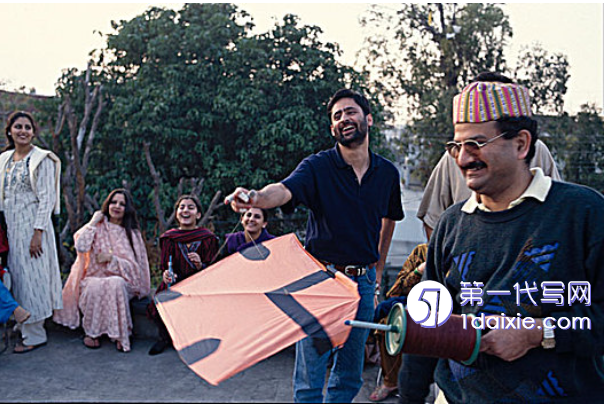本文是一篇英语论文,笔者认为在全球化背景下,移民和难民的生活标志着对传统实践框架的深刻反思。无论是投资渠道、政治参与、网络空间、文化认同还是地方重建,“移民的生活经历为跨国主义在全球背景下产生的现代意义提供了一个活生生的例子,并成为跨国主义宏观抽象理论的最具体解释”(丁10)。移民或难民在跨国实践过程中遇到的各种跨国问题一直是专家们的热门话题和学者。
Chapter OneThree Dimensions of Transnational Writing in Mohsin Hamid’s Novels
1.1 Geography and Transnational Writing
Generally speaking,transnational activities are explained as transformation ordisplacement of geographical space.Therefore,the transnational activities are related tocross geographical territory.Hamid portrays many geographical landscapes followingmigrants and refugees’migration in The Reluctant Fundamentalist and Exit West,which shows different living environment and transnational habits.These different geographicaldescriptions also show the huge differences among countries because of globalization.Theseuneven geographical space are more about the level of national development.As a part ofglobalization,technology plays an important role in transnational activities.They are drivingforce of transnational activities and one of main reasons of transnational dilemmas.Inaddition,these two novels also exhibit global perspective through transition of geographicalscenes.By that,Hamid expresses his transnational attitude and concern about migrants andrefugees.

1.1.1 Uneven Geographical Space in The Reluctant Fundamentalist
In The Reluctant Fundamentalist(herceforth,TRF),Hamid vividly shows thedifferences between unbalanced geographical development through transformation ofgeographical scenes.In his view,the main reason for the unbalanced development in theseregions is unbalanced development of globalization.The development of globalization“doesnot benefit all countries as Adam Smith at the end of the 18th century and David Ricardo inthe 19th century believed”(Z.Wang,Shang 122).The uneven development of globalizationleads to unbalanced geographical development.This is not only the main reason for flow ofmigrants,but also a culprit of the dilemma of migrants.In The Reluctant Fundamentalist,Hamid shows obvious gap between regions through comparison between the United Statesand Pakistan.
1.2 Ideology and Transnational Writing
In the global context,crossing geographical borders is not only transition of physicalspace,but also confrontation and competition of ideological measures between differentcountries.Hamid presents a unique picture in these two novels through describing conflict ofdifferent ideologies,and tries to explain the influence of the existence and transformation ofideological factors on the transnational dilemma by analyzing the changes of political worldin the Eastern and Western countries,so as to seek a breakthrough the transnational dilemmaof migrants and refugees.
1.2.1 Ideological Misunderstanding in The Reluctant Fundamentalist
In Travel and Translation in the Late Twentieth Century,James Clifford(1997)uses theterm“transnational”to describe a new type of migrant who has physical,emotional,andpolitical ties to both his home country and his host country.In The Reluctant Fundamentalist,Changez is one of the tropes of migrants.He comes to the United States as a migrant to seeka higher standard of living.But he is not aware of strong power of different ideologicaldiscourse effecting on the transnational practice.In the global context,crossing geographicalborders is not only the transition of physical space,but also the confrontation andcompetition of political measures between different countries.
Chapter Two Identity Construction of Migrants and Refugees
2.1 Dilemma of Hybrid Identity
In the process of transnational migration,migrants and refugees possess culturalalienation because of the shuttling between different cultures.Despite being deeplyinfluenced by the culture of their home country,migrants and refugees are in a marginalposition.Under the oppression of mainstream discourse,they become“the others”.Underthe influence of the multiple cultures,they already have had impure identity characteristics.Instead of realizing the existence of hybrid identity,however,they are blindly pursuing asingle and pure identity.Some of them choose to completely abandon their past foreconomic benefits or social status,while some reject the mainstream culture and stick totheir own traditions.In fact,whichever way they choose,they will inevitably experience theidentity dilemma due to cultural conflicts.Hamid portrays the identity dilemma of migrants and refugees in The Reluctant Fundamentalist and Exit West to explore their hybrid identitiesthat influence by many different cultures.
2.2 Acceptance of Hybridity Identity
Hamid expresses his profound reflection on cultural identity through detaileddescription of the identity dilemma of the protagonist in the novel.In the transnationalprocess,migrants and refugees have a hybrid identity resulting from moving from oneculture to another.In the context of globalization,cultural conflict and integration areinevitable.As marginalized groups,migrants and refugees can neither fully integrate into themainstream culture nor completely return to the homeland culture to make a reasonableidentity position.Therefore,in Hamid’s view,understanding and accepting one’s hybrididentity is an effective way to negotiate with different cultures and resolve cultural conflicts.
2.2.1 Migrants’Identity Acceptance
The two different cultures influence and combine with each other in the process ofcommunication and collision,and gradually form a mixed culture.Under the influence of mixed culture,individuals also gradually form a“lost and misplaced identity,a hybrididentity that is neither motherland identity nor foreign identity,or both”(O’Reily 140).However,in transnational practice,individuals often ignore the characteristics of multipleidentities and pursue a single and pure identity persistently.Facing mixed identityconsciousness,they are so confused as to eventually fall into the vortex of identity anxiety.In The Reluctant Fundamentalist(henceforth,TRF),the hybrid identity is vividly reflected inthe characters by Hamid.
Chapter Three Community Construction in Transnational Writing.........................55
3.1 Constructing Homogeneous Community....................................55
3.2 Constructing Diversified Communities...........................58
3.2.1 Emotional Communities...............................58
3.2.2 Spiritual Communities.................................61
3.3 Constructing a Community of Shared Future..............................63
Conclusion..........................68
Chapter Three Community Construction in Transnational Writing
3.1 Constructing Homogeneous Community
In recent years,the theme of community construction has always been the focus ofliterary writers.It mainly refers to the combination mechanism of human survival andcoexistence,among which the most common is the community composed of blood,geography or interests.Raymond Williams(1998)argues that:
Unlike all other terms referring to social organizations(state,nation,society,etc.),the term‘community’always seems to be used to evoke beautiful associations[...]It does not seem tohave negative connotations,and shall not be endowed with explicit disapproving ordistinguishing connotations.(Williams 81)
However,Tuan Yifu(2002)believes that in order to maintain cohesion,a community willsuppress the individuality that is inconsistent with the community goal internally,andstrengthen the identity of the community externally through the language strategy ofassimilating the other party,demarcating boundaries and adopting images that are differentfrom other communities.In the end,the pursuit of identity within or outside the community will lead to violence.

Conclusion
In the context of globalization,migrants and refugees’life has marked a profoundreflection on the framework of traditional practice.Whether it is investment channels,political participation,cyberspace,cultural identity and local reconstruction,“the lifeexperience of migrants provides a living example of the modern significance produced bytransnationalism in the global context and becomes the most concrete interpretation of themacroscopic and abstract theory of transnationalism”(Ding 10).The various transnationalproblems encountered by migrants or refugees in the process of transnational practice havebeen a hot topic among experts and scholars.As one of writers who cares about transnationalissues,Mohsin Hamid,a British writer who was born in Pakistan,puts his thoughts in TheReluctant Fundamentalist and Exit West that are closely associated with migrants andrefugees’crisis.He writes The Reluctant Fundamentalist tells a story of migrants’angle,andExit West tells a story of refugees’.Although he exhibits these two different transnationalgroups’transnational dilemma,Hamid expresses same wishes about free migration.Therefore,the thesis attempts to analyze migrants and refugees’transnational dilemma andHamid’s transnational attitude and transnational consciousness.
Although The Reluctant Fundamentalist and Exit West focus on different subjects,thereis a continuity in time and space between them.Hamid analyzes the dilemma oftransnational groups through the protagonists’transnational practice.As discussed in chapterone,transnational migration is influenced by different geographical,ideological and culturalfactors.In Hamid’s view,the close connection of geographical,ideological and culturalfactors accelerates the process of globalization and promotes the migration of refugees andmigrants in the global context.However,due to the uneven development of regions causedby globalization,geographical,ideological and cultural factors have also causedtransnational dilemmas of migrants and refugees.Transnational migration is not only aprocess of crossing geographical,cultural and ideological borders,but also the beginning ofembracing and adapting to many disparities and differences.
reference(omitted)
